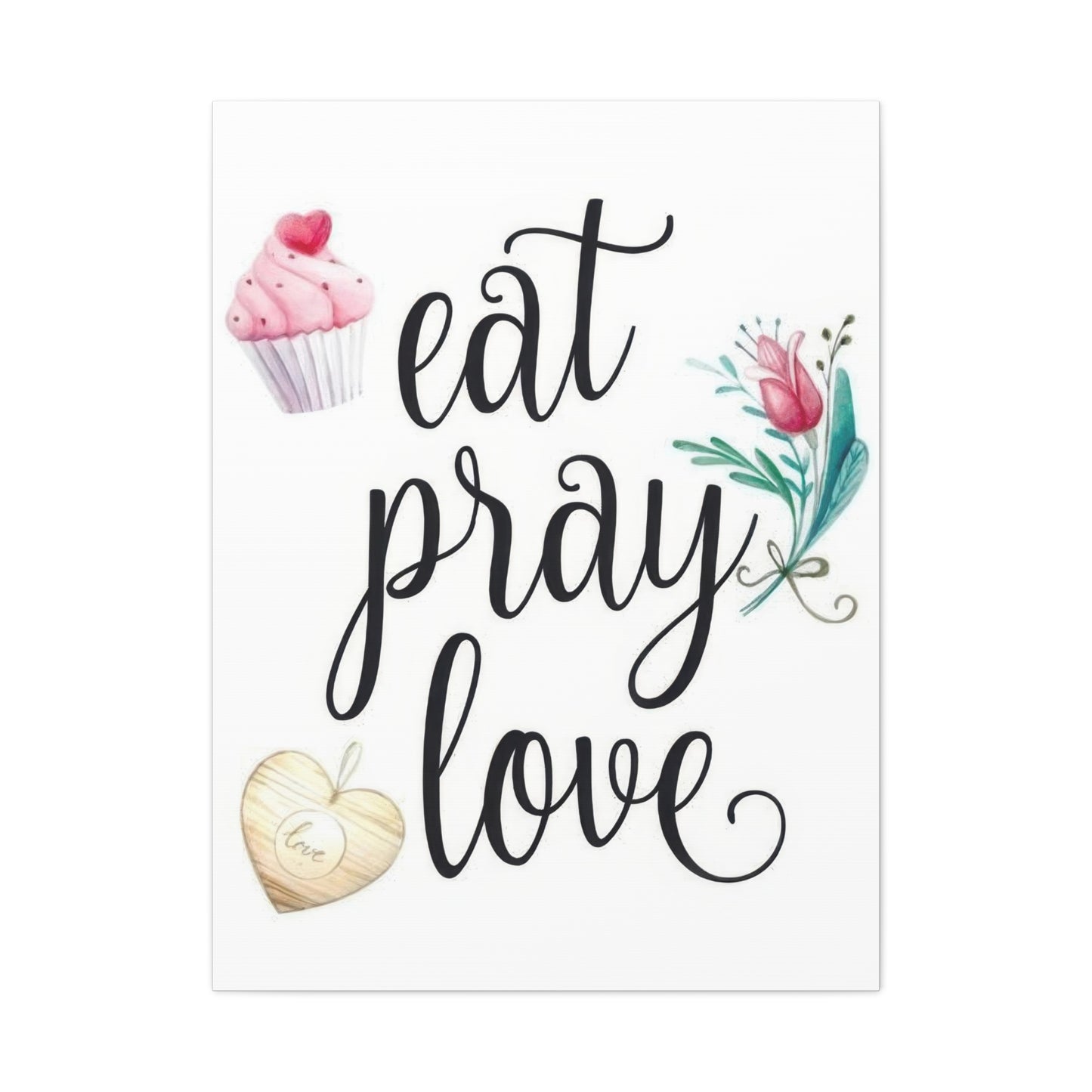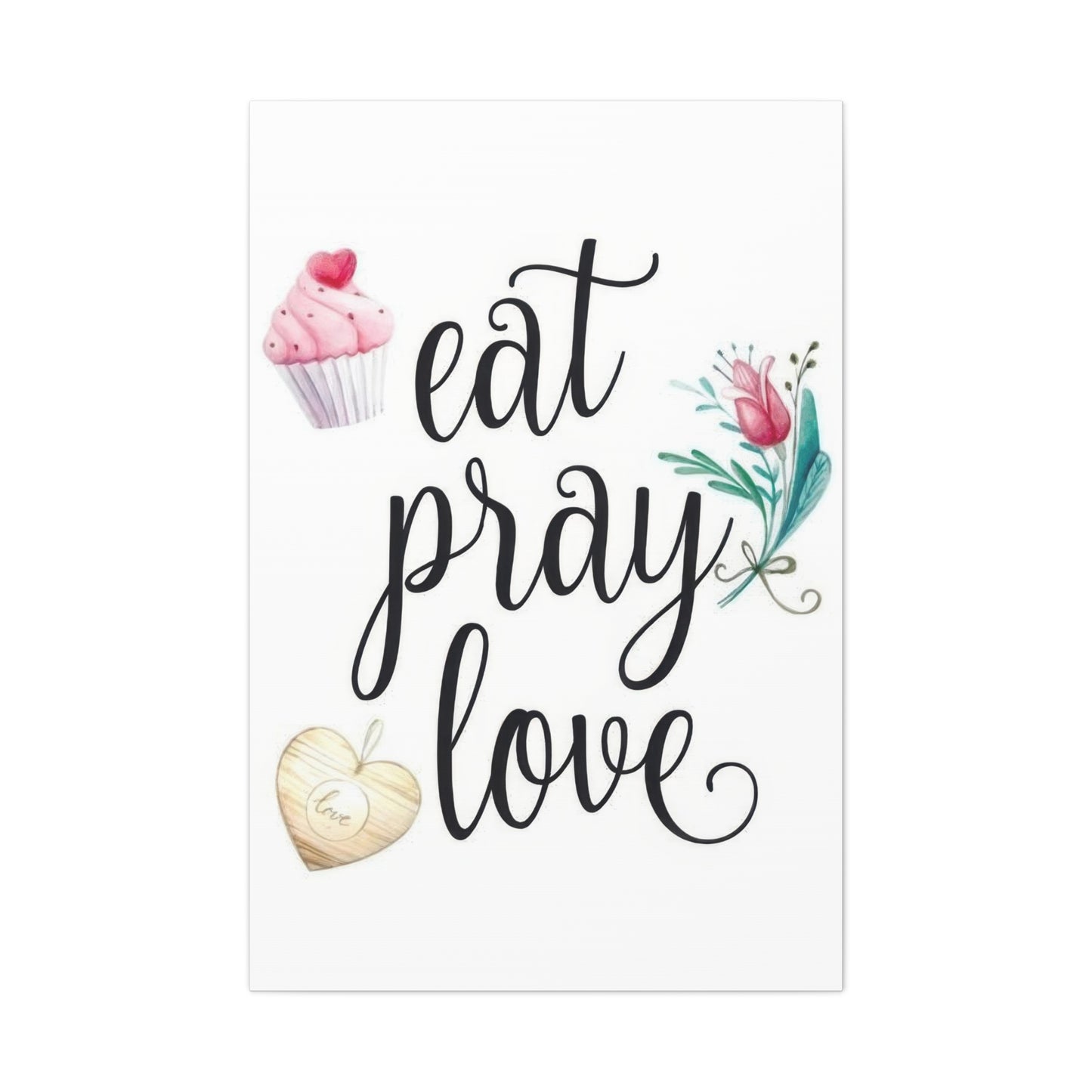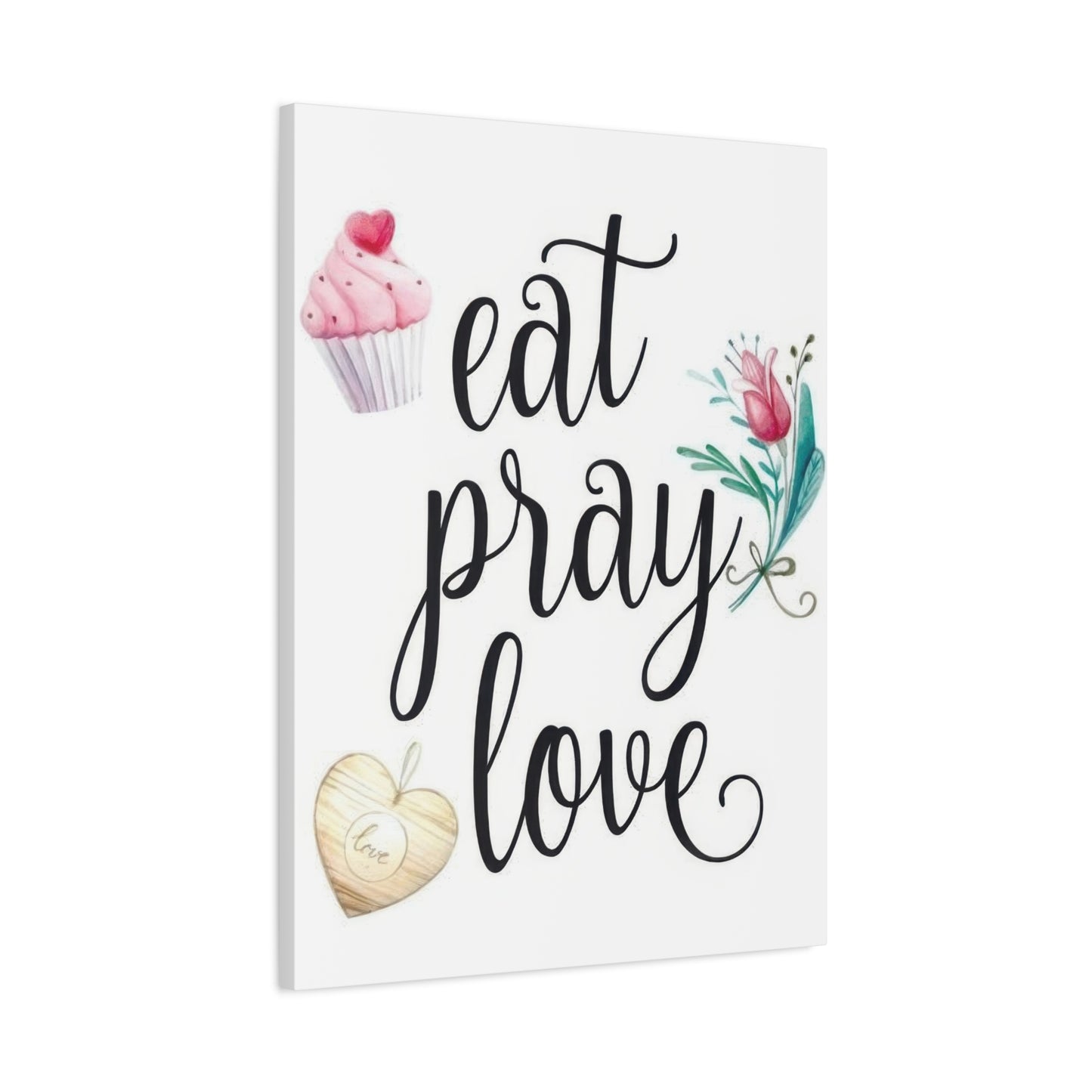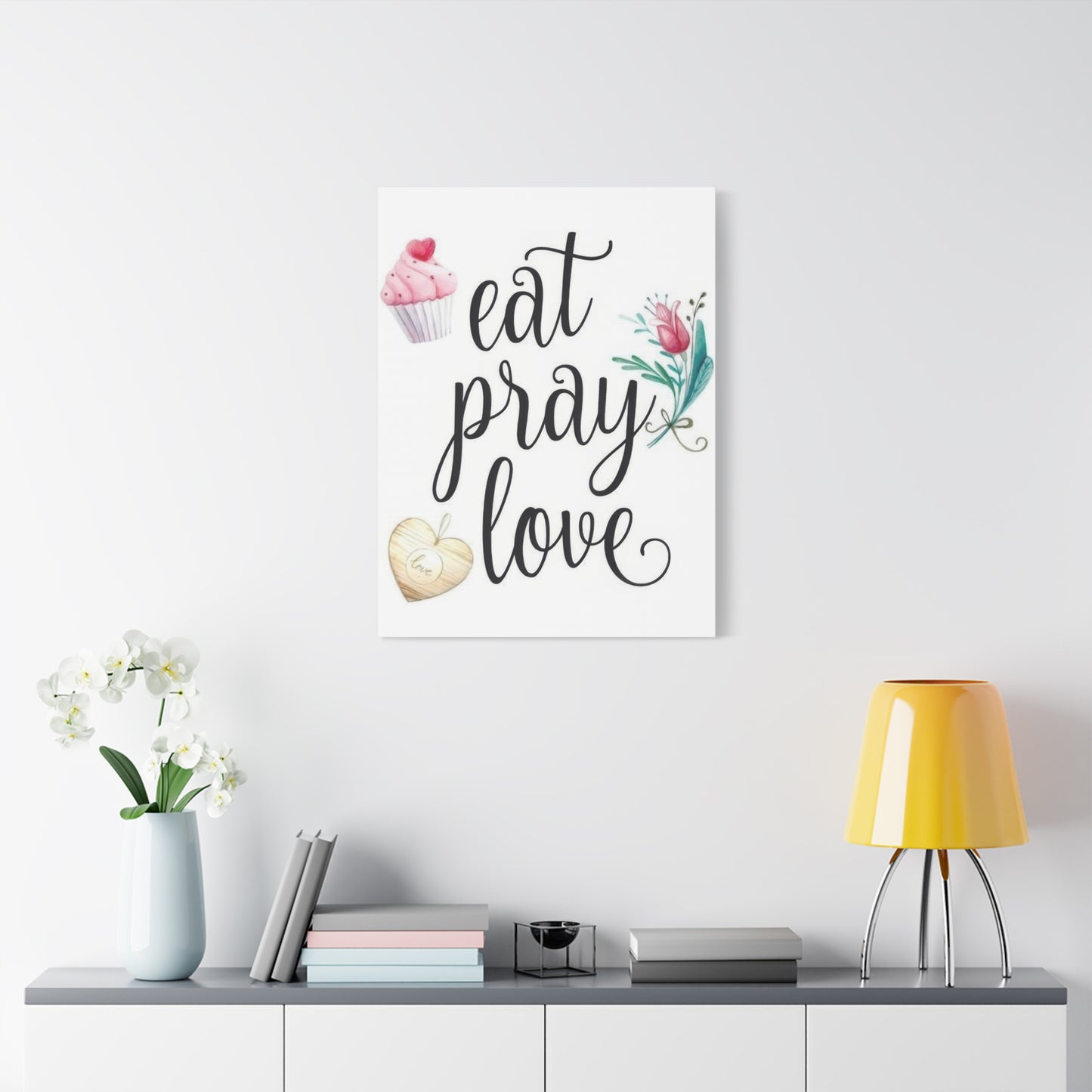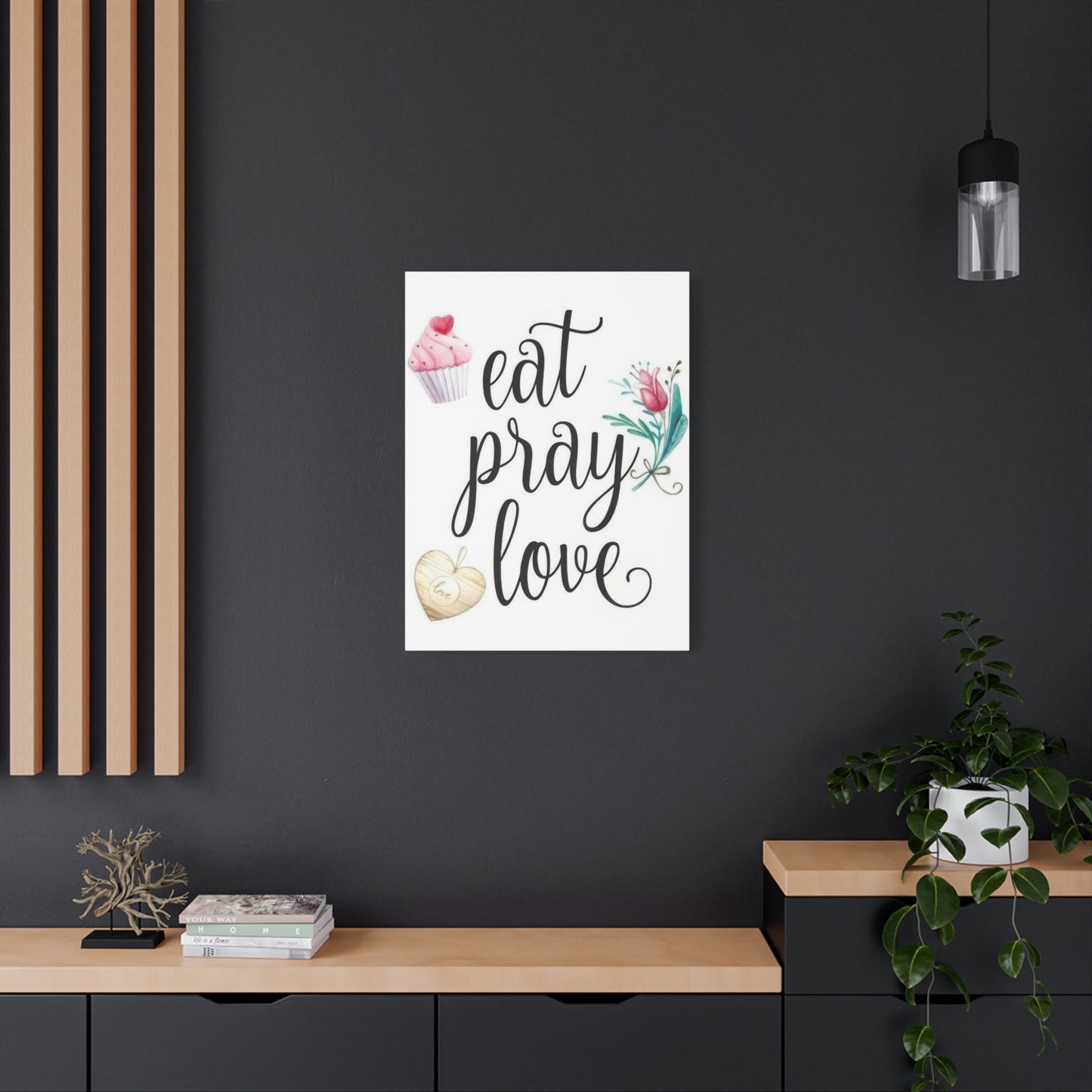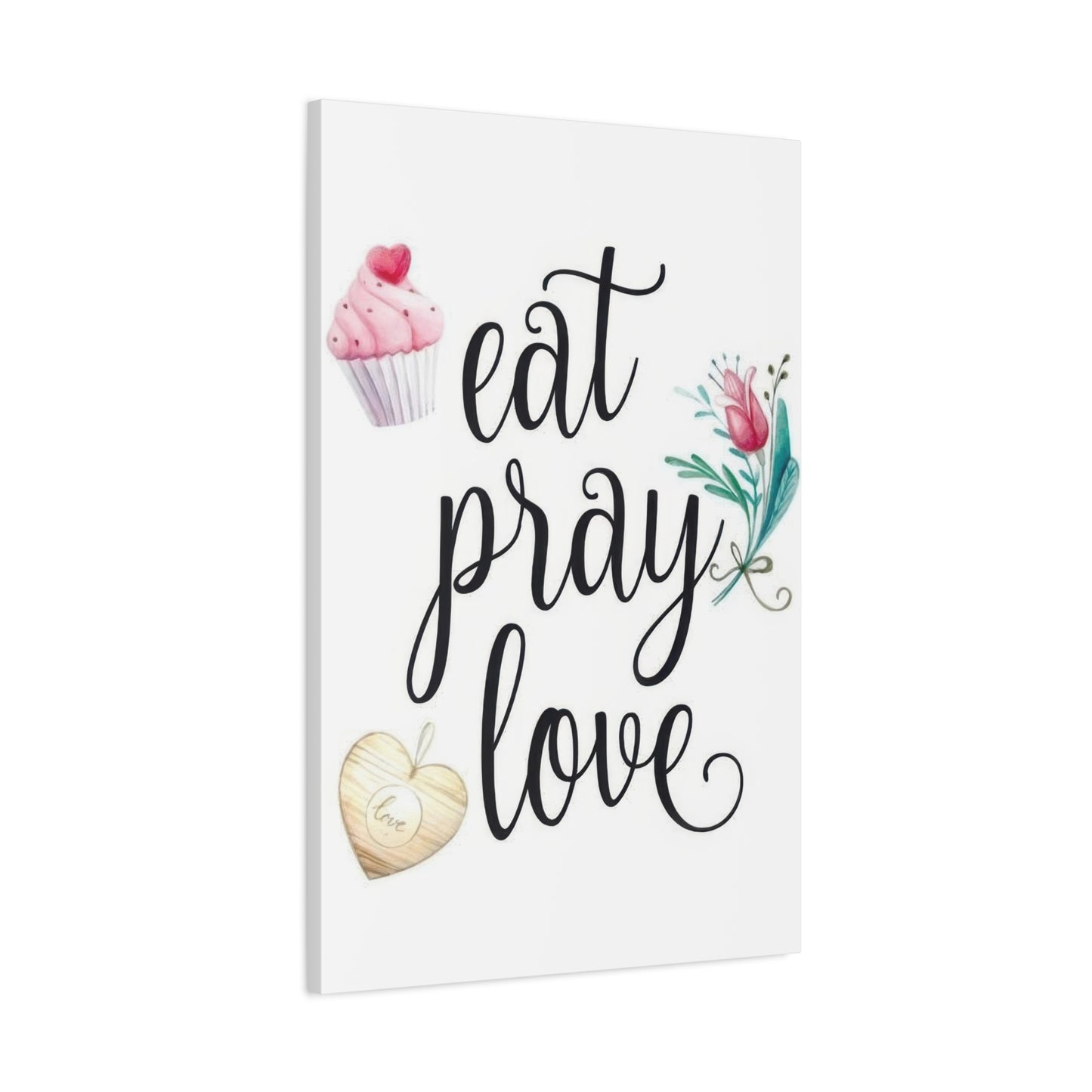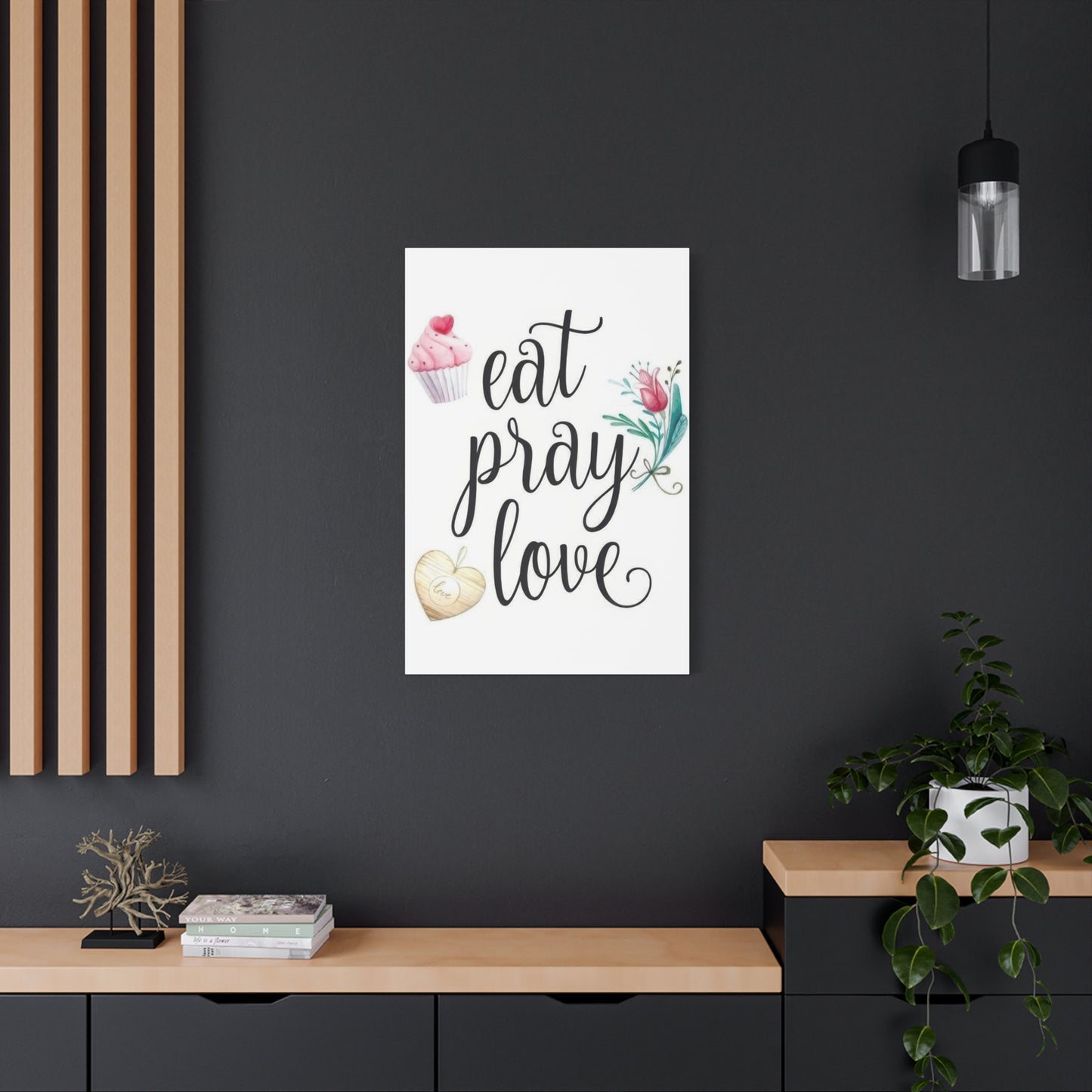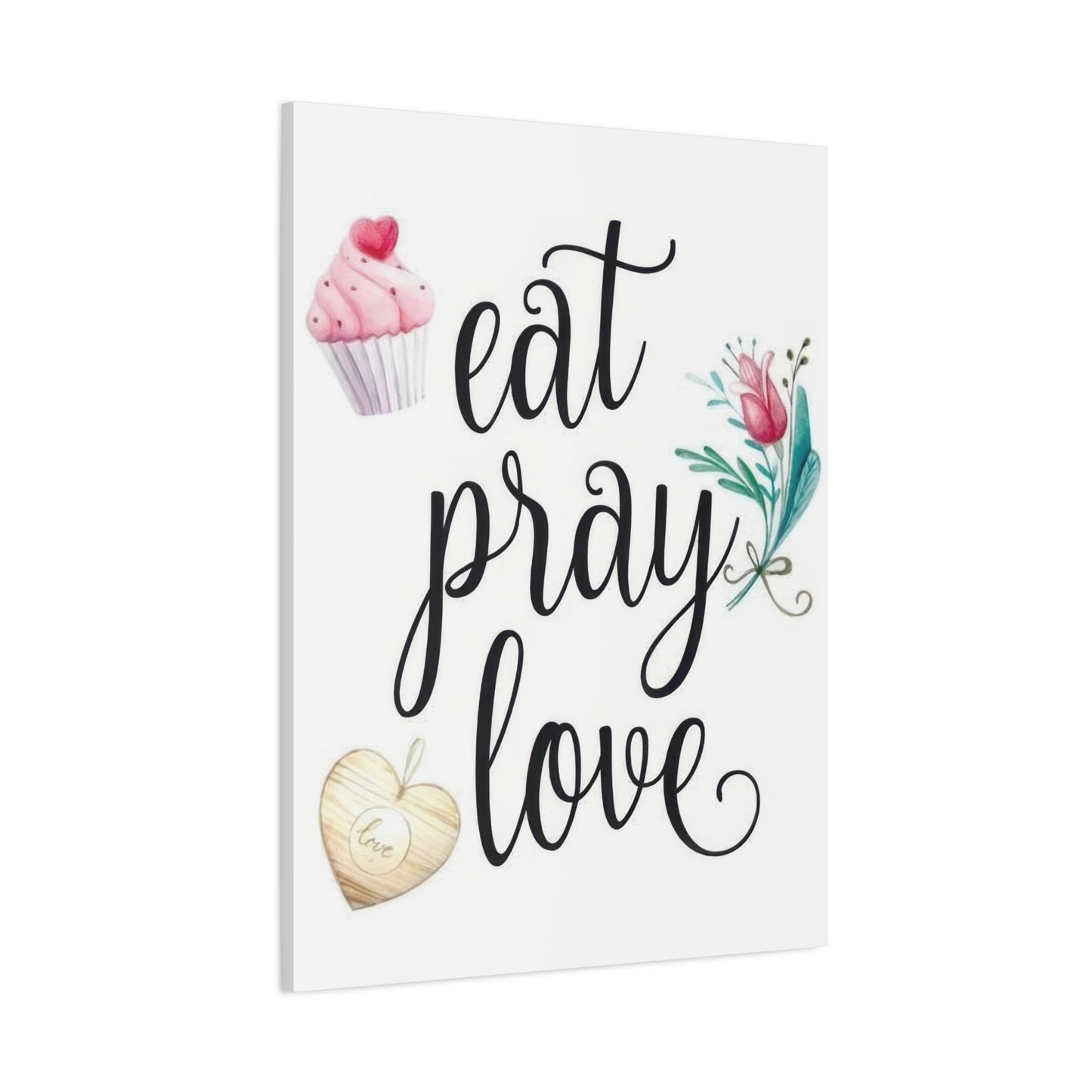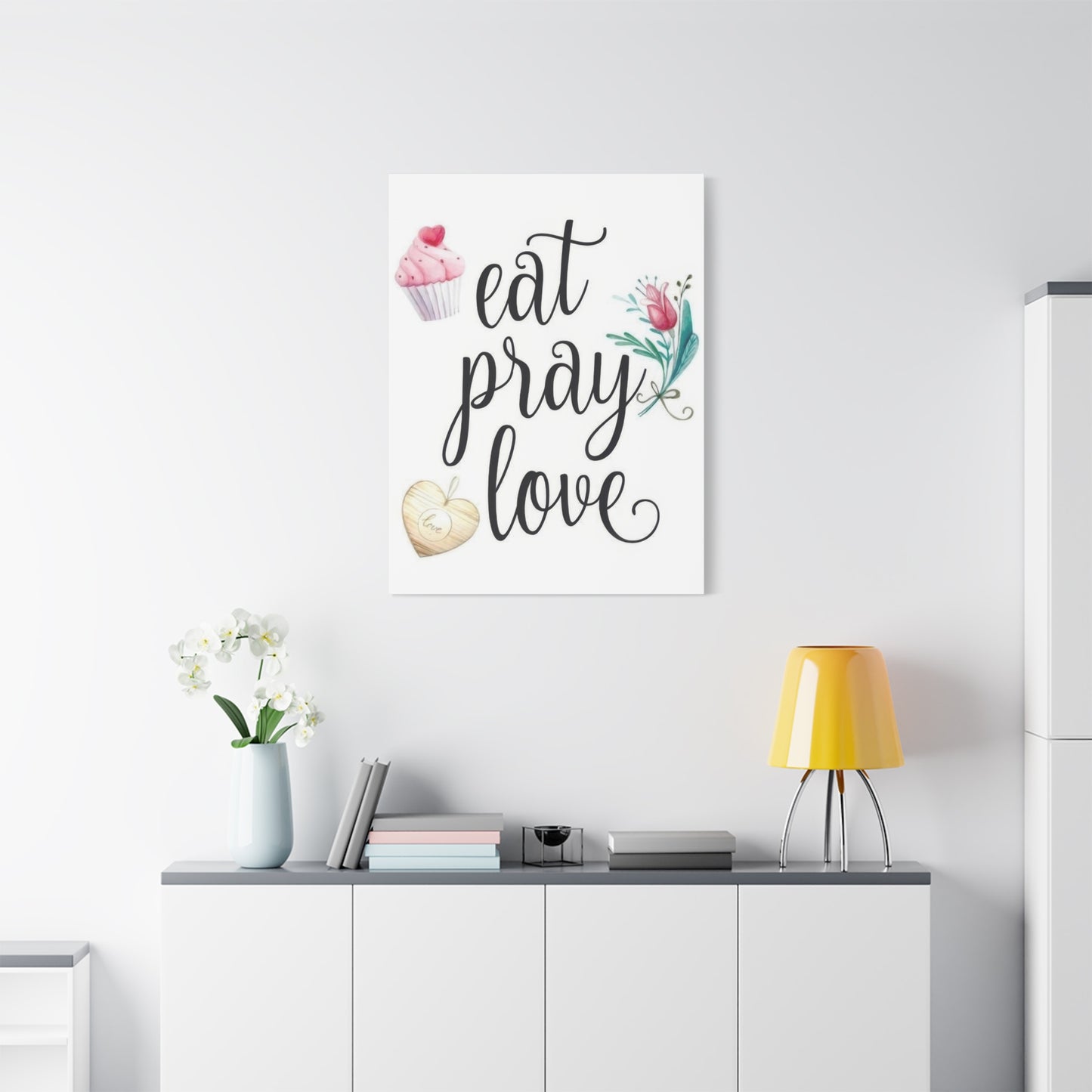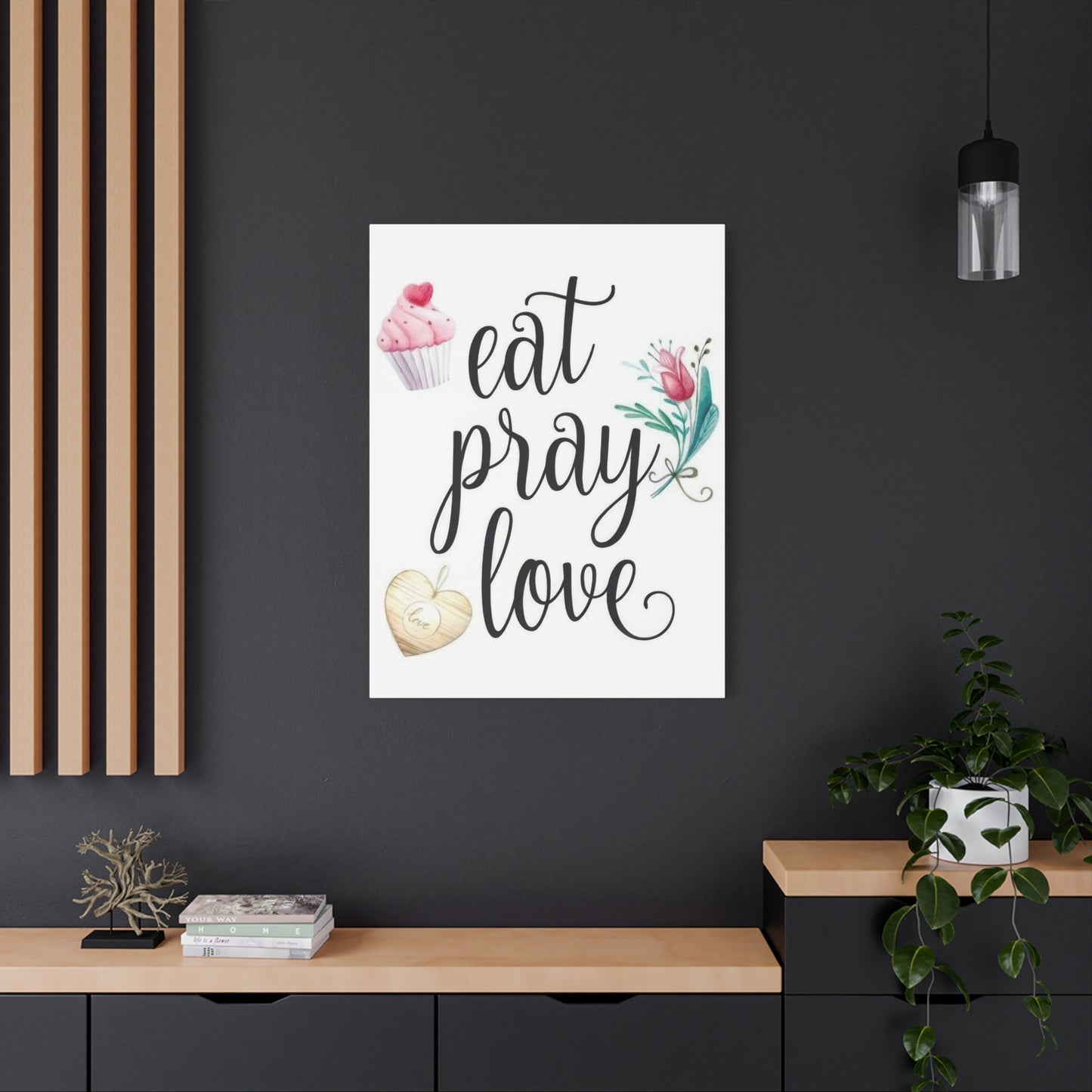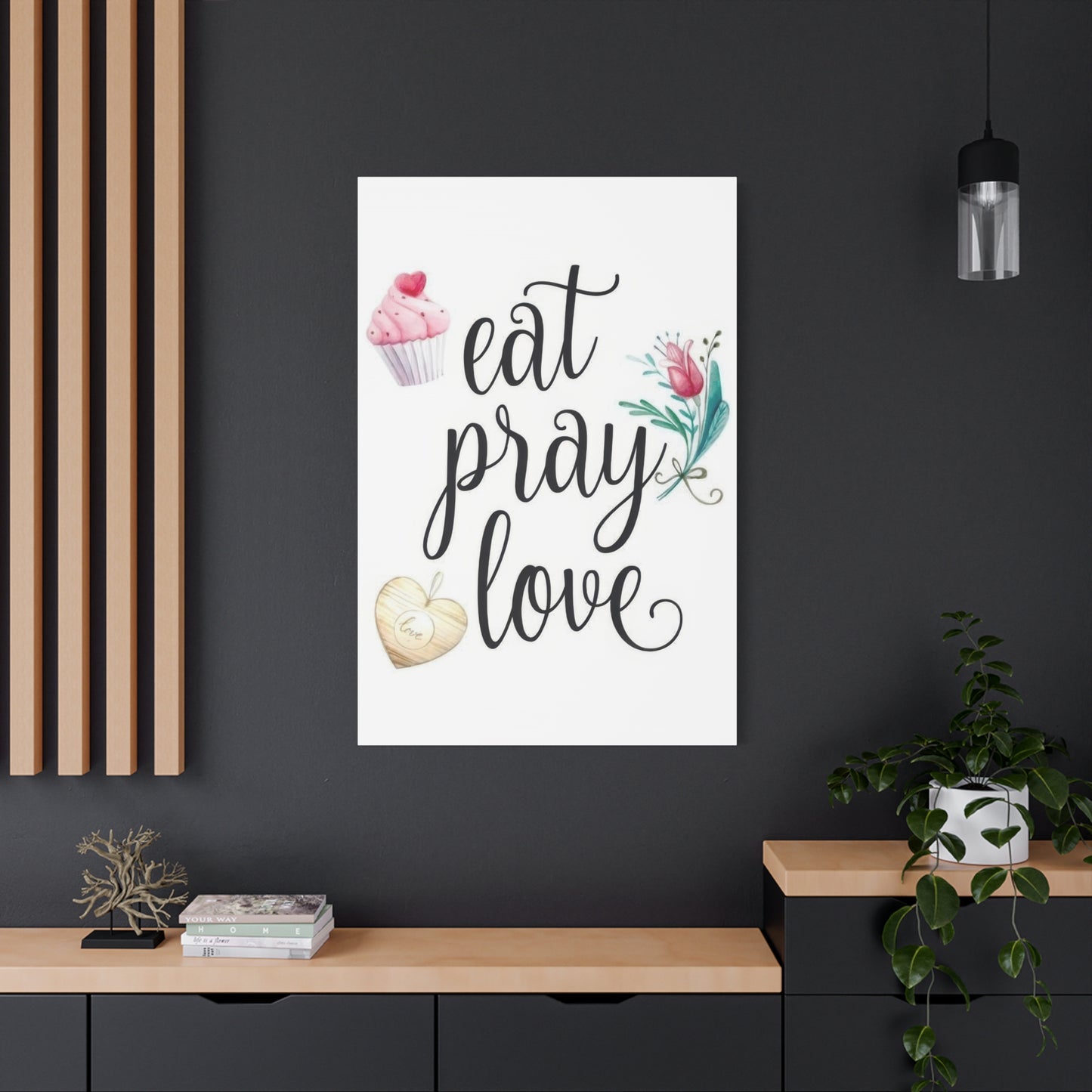Transform Your Space with Eat Pray Love: The Ultimate Guide to Inspirational Wall Art and Self-Discovery Décor
The transformative power of words has the ability to reshape our living spaces and our mindsets simultaneously. When Elizabeth Gilbert's memoir Eat Pray Love captured the hearts of millions worldwide, it became more than just a bestselling book or blockbuster film. The philosophy embedded within its pages evolved into a cultural movement that continues to inspire people seeking balance, authenticity, and purpose in their daily lives. Today, this inspiration manifests beautifully in home décor through canvas art, wall prints, and typography designs that bring these timeless messages into our personal sanctuaries.
Creating a living environment that reflects your journey toward self-discovery and personal growth has never been more accessible. The intersection of motivational messaging and aesthetic design offers countless opportunities to infuse your home with intention, beauty, and meaning. Whether you're redesigning a meditation corner, refreshing your bedroom retreat, or adding character to your workspace, incorporating these powerful themes into your wall art selections can serve as daily reminders of your commitment to living authentically.
This comprehensive exploration delves into the multifaceted world of inspirational wall décor centered around themes of nourishment, spirituality, and love. We'll examine how different design approaches, from minimalist typography to vibrant artistic expressions, can transform various spaces throughout your home. You'll discover practical guidance for selecting pieces that resonate with your personal journey, complement your existing décor, and create atmospheres that support your well-being and aspirations.
Capturing Words That Inspire: Canvas Art for Personal Transformation
The practice of displaying inspirational quotations in living spaces dates back centuries, but contemporary canvas printing technology has revolutionized how we incorporate meaningful words into our home environments. Unlike traditional framed prints or posters, canvas art offers a sophisticated, gallery-quality presentation that elevates inspirational messaging beyond simple decoration into genuine artistic expression. The texture of canvas adds depth and warmth to typography, creating visual interest while maintaining the clarity and impact of the message itself.
When selecting canvas art featuring inspirational quotes, consider how the visual presentation enhances the meaning of the words themselves. Typography choices communicate subtle messages about tone and intention. Sans-serif fonts typically convey modernity, simplicity, and directness, making them ideal for straightforward affirmations and declarations. Serif fonts, with their classical elegance, lend gravitas and timelessness to wisdom and philosophical reflections. Script and handwritten styles introduce warmth, personality, and intimacy, suggesting personal connection and heartfelt sentiment.
The physical presence of canvas art contributes significantly to its psychological impact. Unlike digital displays or temporary paper prints, a substantial canvas piece demonstrates commitment to the message it carries. This permanence reinforces the importance of the words in your daily life, transforming fleeting inspiration into enduring motivation. The three-dimensional quality of stretched canvas creates shadows and depth that change throughout the day as natural light shifts, keeping the artwork visually dynamic and preventing it from fading into background noise.
Color psychology plays a crucial role in how inspirational canvas art affects your emotional state and energy levels. Neutral palettes featuring black text on white or cream backgrounds create calm, focused environments ideal for reflection and contemplation. These versatile combinations complement virtually any decorating style while keeping attention centered on the message itself. Warm earth tones like terracotta, ochre, and sage green evoke feelings of groundedness and connection to nature, perfect for spaces dedicated to mindfulness and restoration.
Conversely, vibrant colors inject energy and dynamism into inspirational messages. Coral pinks and warm oranges stimulate creativity and enthusiasm, making them excellent choices for creative workspaces or social areas. Deep blues and teals promote tranquility and introspection, ideal for meditation spaces or bedrooms. When the color palette aligns with both the message and the room's purpose, the artwork becomes an integrated element of a holistic environment rather than merely decorative.
Size considerations extend beyond simple spatial logistics to encompass psychological impact. Large-scale canvas pieces make bold statements that command attention and serve as focal points within a room. They work particularly well in spacious areas with high ceilings or expansive walls, where their presence can anchor the space and provide visual weight. Medium-sized pieces offer versatility, working equally well as standalone features or as elements within gallery wall arrangements. Smaller canvases provide intimate touches, perfect for creating personal moments of inspiration in unexpected places like bathroom vanities, closet dressing areas, or kitchen breakfast nooks.
The arrangement of multiple canvas pieces amplifies their collective impact. Triptych presentations, where a single message or design spans three separate canvases, create sophisticated visual narratives that draw the eye across the composition. This format works beautifully with sequential concepts or journeys, making it particularly appropriate for themes of personal transformation and self-discovery. Grid arrangements of multiple smaller canvases create dynamic, contemporary installations that can showcase various related messages or different aspects of a single philosophy.
Quality considerations significantly affect both the visual appeal and longevity of canvas art. Premium canvas materials resist fading, warping, and degradation over time, ensuring your investment continues inspiring you for years to come. Archival-quality inks maintain color vibrancy and prevent yellowing, while properly stretched and stapled canvases maintain their shape and tension. Gallery-wrapped edges, where the design continues around the sides of the frame, eliminate the need for additional framing and create a polished, professional appearance suitable for any decorating context.
Installation approaches influence how canvas art integrates into your daily experience of space. Traditional hanging methods using picture hooks or wall anchors provide permanent placement, ideal when you've identified the perfect location for a particular piece. However, leaning canvas art on mantels, shelves, or console tables creates a more casual, easily changeable aesthetic that accommodates evolving tastes and seasonal refreshes. This approach also eliminates wall damage concerns, making it particularly appealing for renters or those who frequently reconfigure their spaces.
Journey Through Words: Creating Spaces That Honor Personal Exploration
The concept of intentional travel as a vehicle for self-discovery resonates deeply with those seeking meaning beyond material accumulation and conventional success markers. This philosophy emphasizes experiences over possessions, growth over comfort, and authenticity over appearances. When translated into home décor, these principles manifest as environments that tell stories, celebrate journeys, and honor the transformative power of stepping outside familiar boundaries.
Wall art inspired by themes of travel and self-discovery bridges the gap between wanderlust and home life. These pieces serve as visual reminders that growth often requires venturing into unknown territory, whether that means booking a plane ticket or simply approaching familiar situations with fresh perspectives. The imagery and messaging associated with this aesthetic typically emphasizes openness, curiosity, and courage, qualities essential for both geographical exploration and internal transformation.
Creating travel-inspired interiors doesn't require abandoning coherent design principles or creating cluttered, souvenir-laden spaces. Instead, thoughtful curation of meaningful pieces creates layered, sophisticated environments that reflect personal values and experiences. Wall art featuring destinations, maps, or travel-related quotations provides anchors for these themes without overwhelming the space. When selected intentionally, these pieces prompt reflection on past journeys while inspiring future adventures.
The color palettes associated with travel-inspired décor often draw from natural landscapes and diverse cultural traditions. Ocean blues and sandy neutrals evoke coastal destinations and seaside serenity. Rich jewel tones reflect the vibrant markets and textiles of global cultures. Earthy terracottas and warm ochres conjure Mediterranean villages and desert landscapes. By selecting wall art that incorporates these colors, you create visual connections between your living space and the wider world, fostering a sense of global citizenship and interconnectedness.
Typography-based travel art offers particular versatility for various decorating styles. Simple text stating destination names or coordinates provides minimalist sophistication suitable for contemporary spaces. Inspirational travel quotes overlaid on photographic backgrounds create depth and context, connecting abstract concepts to concrete places. Hand-lettered designs add personality and warmth, suggesting the personal nature of travel experiences and individual journeys.
The strategic placement of travel-inspired wall art throughout your home creates a cohesive narrative thread connecting different spaces. Entryways benefit from welcoming messages that set intentions for both leaving and returning, framing your home as a base for adventures rather than a boundary limiting exploration. Living areas featuring travel themes encourage conversations about experiences, dreams, and perspectives, making them ideal for spaces where you entertain guests and build community. Bedrooms adorned with journey-related art support reflection on personal growth, creating environments conducive to the inner exploration that complements external adventures.
Layering different types of travel-inspired elements creates richness and authenticity in your décor. Combining canvas art with physical artifacts like vintage maps, travel journals, or cultural textiles builds dimensional, storytelling environments. However, maintaining visual balance prevents these combinations from feeling chaotic or overwhelming. Let your wall art serve as anchoring elements that provide structure and focus, while supplementary items add supporting detail and personal history.
The aspirational quality of travel-inspired décor serves important psychological functions beyond simple aesthetics. Surrounding yourself with images and messages related to exploration and discovery keeps these values present in your daily awareness, influencing decisions and priorities. When you face crossroads or difficult choices, these visual reminders can reconnect you with your deeper values and long-term aspirations, providing clarity amid complexity.
Digital nomadism and remote work have transformed how many people relate to concepts of travel and home. For those whose professional lives enable location independence, travel-inspired wall art takes on additional significance as a way to maintain connection with the broader journey while creating temporary homes in various locations. Portable canvas pieces or prints can travel with you, providing continuity and personal touch in short-term accommodations, while larger permanent pieces in your primary residence honor the overall adventure of this lifestyle choice.
The intersection of travel themes and self-discovery messaging creates particularly powerful combinations. Phrases emphasizing personal growth, courage, or transformation gain additional resonance when paired with imagery or design elements suggesting journey and movement. This synthesis acknowledges that the most meaningful travels often occur internally, even when prompted by external movement. Wall art that captures this dual journey honors both the places we visit and the people we become through those experiences.
Simplicity as Statement: The Power of Minimal Typography in Living Spaces
The minimalist design movement has profoundly influenced contemporary home décor, emphasizing intentionality, clarity, and the elimination of excess. When applied to typography-based wall art, minimalism creates powerful visual statements through restraint rather than elaboration. Clean lines, ample negative space, and carefully selected words combine to produce designs that feel both timeless and thoroughly modern, appealing to those who appreciate sophistication without ostentation.
Minimalist typography prints excel at conveying messages with maximum clarity and impact. By stripping away decorative elements, ornamental flourishes, and complex compositions, these designs ensure that words themselves take center stage. This directness creates immediate comprehension and emotional connection, eliminating the cognitive processing required by busier designs. The result is artwork that communicates instantly while inviting deeper contemplation over time.
The aesthetic appeal of minimalist design lies partly in its versatility and adaptability. Simple typography prints complement virtually any decorating style, from Scandinavian hygge to industrial loft to coastal casual. This flexibility makes them excellent long-term investments, as they remain relevant through changing trends and style evolution. Unlike highly stylized or trendy designs that may feel dated after a few years, quality minimalist pieces maintain their appeal indefinitely.
Negative space plays a crucial role in minimalist typography, functioning as an active design element rather than simply empty background. The white or neutral space surrounding text creates visual breathing room that prevents designs from feeling crowded or overwhelming. This openness also serves practical purposes, allowing the artwork to coexist peacefully with other design elements in the room without competing for attention or creating visual chaos.
Typography selection becomes paramount in minimalist designs where decorative elements cannot compensate for poor font choices. The personality of a typeface must carry the entire emotional and aesthetic weight of the piece. Geometric sans-serif fonts convey modernity, efficiency, and clarity, perfect for straightforward affirmations or practical wisdom. Humanist typefaces introduce warmth and approachability while maintaining clean lines. Even within minimalist constraints, thoughtful typography choices create distinct moods and tones.
The concept of intentional living aligns naturally with minimalist aesthetics, making these design approaches particularly appropriate for inspirational messaging focused on mindfulness, purpose, and authenticity. Wall art featuring simple phrases about presence, gratitude, or intentionality gains additional impact through visual presentations that embody those same principles. The form reinforces the content, creating cohesive messages that resonate on multiple levels.
Scale and proportion take on heightened importance in minimalist typography designs. Without decorative elements to fill space, the relationship between text size, canvas dimensions, and surrounding negative space becomes the primary source of visual interest. Oversized text on large canvases creates drama and confidence, making bold statements appropriate for spacious, contemporary interiors. Smaller text on generously sized backgrounds introduces subtle sophistication, inviting closer inspection and creating intimate moments of discovery.
Color choices in minimalist typography typically favor restraint, though not necessarily complete absence of color. Classic black text on white backgrounds provides maximum contrast and timeless appeal, suitable for any context. However, subtle introductions of color can add warmth and personality without compromising minimalist principles. Charcoal gray instead of pure black softens the contrast slightly, creating gentler visual experiences. Single accent colors used sparingly add personality while maintaining overall simplicity and coherence.
The placement of minimalist typography prints significantly influences their impact and integration within a space. Centering designs on large walls creates formal, balanced compositions with classical appeal. Off-center placements introduce dynamic asymmetry appropriate for more contemporary or eclectic spaces. Hanging minimalist pieces at unexpected heights or in unusual locations like above doorways or in hallway end-walls creates moments of discovery and prevents the artwork from becoming invisible through over-familiarity.
Grouping multiple minimalist pieces requires careful attention to spacing, alignment, and conceptual relationships. Gallery walls featuring minimalist typography benefit from consistent spacing that creates rhythm and unity while allowing each piece to maintain its individual identity. Thematic connections between pieces strengthen the overall installation, whether through related messages, complementary color palettes, or coordinated typography choices. However, avoiding overly matchy-matchy arrangements prevents the collection from feeling contrived or uninspired.
The psychological effects of minimalist environments have been well-documented, with research indicating reduced stress, improved focus, and enhanced well-being in spaces that embrace simplicity and order. Minimalist wall art contributes to these benefits by avoiding visual clutter while providing meaningful focal points. The clarity and intentionality of these designs support mental clarity and purposeful living, making them particularly valuable in spaces dedicated to work, meditation, or restoration.
Energizing Your Everyday: Wall Décor That Drives Action and Intention
Motivational wall décor serves a distinct purpose beyond general inspiration, specifically aiming to prompt action, sustain momentum, and reinforce commitment to personal goals and values. While inspirational art may create feelings of appreciation or contemplation, motivational pieces function as active tools in your personal development toolkit, providing tangible reminders and encouragement when discipline wavers or obstacles appear overwhelming.
The language employed in motivational wall art tends toward action-oriented verbs and direct commands rather than passive observations or gentle suggestions. Phrases emphasizing persistence, courage, and determination create psychological frameworks that support challenging pursuits. This directness serves important functions, cutting through the mental negotiations and rationalizations that often derail progress toward meaningful goals. When motivation flags, a bold reminder visible in your environment can provide the external push needed to overcome internal resistance.
Visual presentation enhances the motivational impact of encouraging messages. Bold typography communicates confidence and certainty, qualities that motivational messaging aims to instill. Strong contrast between text and background ensures immediate visibility and readability, preventing messages from fading into background noise. Dynamic compositions incorporating diagonal lines or asymmetrical arrangements suggest movement and forward progress, visually reinforcing concepts of growth and advancement.
Color psychology contributes significantly to the effectiveness of motivational décor. Energizing colors like vibrant reds, oranges, and yellows stimulate alertness and activity, making them excellent choices for workout spaces, creative studios, or anywhere you need to overcome inertia and take action. However, these intense colors require careful balancing within overall room design to prevent overwhelming or overstimulating environments. Strategic use of motivational pieces in these colors, surrounded by calmer neutrals, provides energy boosts without creating visual chaos.
Strategic placement of motivational wall art maximizes its functional impact. Positioning these pieces in locations you encounter during transitional moments creates natural checkpoints for intention-setting and commitment renewal. Above desks or workspace areas, motivational messages provide encouragement during challenging tasks. Near doorways, they set intentions as you leave and affirm accomplishments upon return. In home gyms or exercise areas, they push through resistance and fatigue when motivation lags.
The specificity of motivational messaging influences its effectiveness for different goals and challenges. General encouragement like broad affirmations provides baseline support applicable to various situations, maintaining relevance across changing circumstances. More specific messages targeting particular challenges or goals create stronger connections to individual situations but may lose relevance as goals evolve. Balancing general and specific motivational pieces throughout your space provides both sustained foundational support and targeted assistance for current priorities.
Combining motivational wall art with environmental design creates synergistic effects that amplify impact. A home office featuring productivity-focused messaging gains additional power when the physical workspace supports efficient work through proper organization, adequate lighting, and ergonomic furniture. Motivational fitness décor works more effectively when the surrounding space facilitates exercise through appropriate equipment, cleared floor space, and minimal barriers to action. The artwork reinforces behaviors that the environment enables, creating comprehensive systems supporting goal achievement.
The potential for motivational messaging to feel cliché or inauthentic requires thoughtful selection and presentation. Overused phrases that have lost meaning through repetition provide little genuine motivation, instead potentially triggering cynicism or eye-rolling. Seeking messages that resonate personally rather than simply repeating popular quotations ensures authentic connection. Additionally, high-quality design execution elevates even familiar phrases, presenting them in ways that feel fresh and sophisticated rather than tired or trite.
Personal accountability increases when goals and commitments have public visibility, even if that public consists only of household members or frequent visitors. Motivational wall art serves this accountability function by making internal aspirations externally visible. This visibility creates subtle social pressure to maintain consistency between declared values and actual behaviors, supporting follow-through and persistence. However, this works best when the messages genuinely reflect your authentic goals rather than projecting aspirational identities disconnected from real commitments.
Rotation and refreshment of motivational wall art prevents habituation and maintains effectiveness over time. Even the most powerful message loses impact when it becomes so familiar that you no longer consciously register its presence. Periodically updating motivational pieces, whether through complete replacement or strategic rotation of existing items, restores attention and renews impact. This practice also accommodates evolving goals and changing priorities, ensuring your environmental supports remain aligned with current aspirations.
Creating Sanctuary: Bedroom Décor That Nurtures Rest and Reflection
Bedrooms serve as private retreats from the demands and stimulations of daily life, functioning as spaces for rest, restoration, and intimate reflection. The décor choices in these personal sanctuaries significantly influence sleep quality, emotional regulation, and overall well-being. Wall art selections for bedrooms require particular thoughtfulness, balancing aesthetic appeal with psychological appropriateness for spaces dedicated primarily to rest and renewal.
The messages featured in bedroom wall art should support the room's primary functions of rest and restoration rather than stimulating activity or generating stress. Gentle affirmations focusing on peace, self-acceptance, and gratitude create appropriate mental frameworks for bedtime and waking routines. Phrases emphasizing presence and mindfulness help transition away from the day's concerns and into restful states. Overly energizing or demanding messages, while motivating in other contexts, can disrupt the calm atmosphere essential for quality sleep.
Color palettes for bedroom wall art should prioritize calming, soothing tones that promote relaxation rather than stimulation. Soft neutrals like warm grays, gentle beiges, and creamy whites create serene backgrounds that encourage mental quieting. Cool blues and gentle greens tap into psychological associations with nature, water, and tranquility. Even when incorporating darker or richer colors, maintaining muted saturation levels prevents visual overstimulation that could interfere with the room's restful atmosphere.
Typography choices for bedroom wall art benefit from softer, more organic forms rather than harsh geometric designs. Hand-lettered or script fonts introduce warmth and personality while maintaining gentle visual impact. Serif fonts with classical proportions provide elegance without severity. These softer typographic approaches create more intimate, personal feelings appropriate for private spaces where vulnerability and authenticity can safely emerge.
Size considerations for bedroom wall art balance visual impact with spatial appropriateness. While large statement pieces work well in spacious master bedrooms, they may overwhelm smaller sleeping spaces. Positioning artwork at appropriate heights for viewing from both standing and reclined positions ensures the pieces function properly throughout different bedroom activities. Art hung too high may go unnoticed when lying in bed, while pieces at sitting height create connection during quiet morning and evening moments.
The placement of bedroom wall art influences both aesthetic and functional outcomes. Above-bed placement creates traditional focal points and frames the sleeping area, though safety considerations require secure mounting to prevent accidents. Across from the bed allows for contemplation from the primary vantage point, making this location ideal for pieces with messages you want to reflect upon during quiet moments. Side wall placements provide visual interest without dominating the space, working well for multiple smaller pieces or complementary installations.
Creating gallery walls in bedrooms offers opportunities for personal storytelling and layered meaning. Combining inspirational typography with personal photographs, meaningful artwork, and collected treasures creates richly individual environments that reflect authentic selves rather than magazine-perfect staging. These personal collections transform bedrooms into true sanctuaries that honor individual journeys and provide comfort through familiar, beloved items.
The concept of cozy corners within bedrooms extends beyond the sleeping area itself to encompass reading nooks, meditation spaces, or dressing areas. These sub-zones benefit from dedicated wall art that supports their specific functions. Reading corners might feature literary quotes or learning-focused affirmations. Meditation areas work well with mindfulness reminders or spiritual imagery. Dressing areas can display self-love affirmations or body-positive messages that support healthy relationships with physical appearance.
Lighting considerations significantly affect how bedroom wall art appears and functions throughout different times of day. Natural lighting reveals colors and details with full accuracy but changes dramatically with weather and seasons. Bedside lamps and overhead lighting create specific moods through color temperature and intensity. Selecting artwork that appears appealing under various lighting conditions ensures consistent enjoyment, while considering how evening lighting specifically affects the pieces helps maintain the calm atmosphere essential for healthy sleep hygiene.
The intimate nature of bedrooms makes them ideal locations for more personal, vulnerable messaging that might feel too exposed in public areas of the home. Affirmations addressing personal growth challenges, emotional healing, or aspirational identity can provide private encouragement without requiring explanation to guests. This privacy allows for complete authenticity in selecting messages that genuinely resonate, regardless of whether they might seem unconventional or too revealing for more public spaces.
Seasonal rotation of bedroom wall art provides opportunities for refreshment and renewal without requiring complete room redesigns. Lighter, brighter pieces might replace darker, cozier options as seasons transition from winter to summer. Thematic elements could reflect different aspects of personal growth journeys as they evolve throughout the year. This flexibility keeps the bedroom environment dynamic and responsive to changing needs while maintaining its core function as a restorative sanctuary.
Cultivating Presence: Wall Prints Celebrating Self-Love and Awareness
The practices of self-love and mindfulness have gained significant cultural recognition as essential components of mental health and overall well-being. These interrelated concepts emphasize present-moment awareness, self-compassion, and intentional attention to thoughts and feelings. Wall prints celebrating these themes serve as environmental prompts supporting these valuable practices, helping integrate mindful awareness into daily routines and ordinary moments.
Self-love messaging in wall art counters the internal criticism and negative self-talk that many people struggle with daily. Affirmations emphasizing worthiness, inherent value, and unconditional self-acceptance provide alternative narratives to internalized judgments. When displayed prominently in living spaces, these messages offer consistent reminders that self-compassion represents strength rather than indulgence, challenging cultural narratives that equate harsh self-criticism with motivation or discipline.
Mindfulness-focused wall prints typically emphasize presence, awareness, and acceptance of current-moment experience without judgment. Simple reminders to breathe, notice sensations, or return attention to the present serve as gentle anchors throughout busy days. These prompts become particularly valuable during stressful periods when autopilot functioning and reactive patterns dominate conscious awareness. A visible reminder can prompt the brief pause necessary to interrupt unhelpful patterns and choose more intentional responses.
The visual presentation of self-love and mindfulness wall art influences its psychological impact and accessibility. Gentle, approachable designs using warm colors and soft typography feel supportive rather than demanding, appropriate for messages encouraging self-compassion. However, bold presentations emphasizing strength and determination can reinforce that self-love requires courage and active choice rather than passive acceptance. The tone of the design should match the specific aspect of self-love or mindfulness being emphasized.
Integration of natural imagery with self-love and mindfulness messaging creates associations between inner practices and natural rhythms. Images of landscapes, plants, or natural elements paired with relevant text remind viewers that humans are part of natural cycles, deserving the same patience and compassion we extend to growing things. These connections combat the artificial urgency and productivity obsession of modern culture, supporting more sustainable and humane approaches to personal development.
The bathroom represents a particularly strategic location for self-love wall art, as this space involves direct confrontation with physical appearance through mirrors. Positioning affirmations about body acceptance, inner beauty, or worthwhile qualities beyond appearance provides counterbalance to critical thoughts that often arise during grooming activities. These messages support healthier relationships with physical bodies by emphasizing holistic worth rather than narrow aesthetic standards.
Mindfulness practices benefit from dedicated spaces that signal intention and facilitate focus. Creating a meditation corner or quiet zone marked by relevant wall art establishes environmental cues supporting practice. Even a small area with a cushion and intentional décor can serve as an anchor for regular mindfulness practice, with the wall art helping define the space's purpose and calling attention to its availability when stress or overwhelm arise.
The language used in self-love and mindfulness wall prints requires careful consideration to ensure accessibility and avoid toxic positivity. Messages should acknowledge struggle and difficulty rather than dismissing genuine challenges with overly simplistic cheerfulness. Affirmations work best when they feel attainable rather than wildly disconnected from current reality. Compassionate realism creates stronger foundations for growth than unrealistic optimism that invalidates authentic experiences.
Personal relevance determines the effectiveness of self-love and mindfulness messaging. Generic affirmations may lack the specificity needed to address individual struggles and circumstances. Seeking messages that speak to personal challenges, resonate with individual values, or reflect actual mindfulness practices you engage with creates genuine connection rather than superficial decoration. Customizable options allow for even greater personalization, ensuring wall art truly supports your specific journey.
The daily visibility of self-love and mindfulness wall prints creates subtle but cumulative psychological effects through repeated exposure. Even when not consciously focused on the messages, the subconscious mind registers and processes these repeated inputs. Over time, this passive exposure influences self-talk patterns, belief systems, and automatic thoughts. The environmental messages gradually become internalized, supporting lasting change in how you relate to yourself and experience present moments.
Contemporary Aesthetic: Modern Artistic Approaches to Inspirational Themes
Modern inspirational art represents an evolution from traditional motivational posters and simple text-based designs toward more sophisticated aesthetic approaches that honor both message and visual artistry. Contemporary pieces balance meaningful content with design innovation, creating artwork that functions simultaneously as inspiration and as legitimate artistic expression. This dual function appeals to those seeking décor that uplifts without sacrificing visual sophistication or design integrity.
The modern aesthetic in inspirational wall art often incorporates abstract elements, geometric patterns, or artistic typography treatments that elevate simple messages into complex visual experiences. These design approaches prevent messaging from feeling preachy or simplistic by embedding it within layered artistic contexts. The result is artwork that invites contemplation on multiple levels, with visual exploration complementing intellectual and emotional engagement with the words themselves.
Mixed media approaches represent a growing trend in contemporary inspirational art, combining photography, illustration, texture, and typography into unified compositions. These combinations create depth and visual interest impossible with any single medium alone. Photographic backgrounds provide context and atmosphere for overlaid text, while illustrative elements add personality and creativity. Textural components, even when printed rather than physically dimensional, create tactile visual appeal that draws the eye and sustains attention.
The color palettes employed in modern inspirational art frequently draw from current design trends while maintaining timeless appeal. Dusty pastels combined with metallic accents create contemporary femininity without veering into overly sweet territory. Moody, saturated jewel tones against dark backgrounds produce dramatic sophistication appropriate for more formal or mature spaces. Monochromatic schemes exploring subtle variations within single color families demonstrate refined restraint and visual confidence.
Abstract expressionism influences many contemporary inspirational pieces, with gestural marks, paint drips, or brush strokes adding energy and movement to otherwise static text. These dynamic elements suggest process, imperfection, and authentic human creation rather than sterile digital perfection. The artistic marks humanize the messages, acknowledging that inspiration and growth involve messy, nonlinear processes rather than clean, predictable progressions.
Typography itself becomes artistic in modern inspirational pieces, with custom lettering, unusual font pairings, or experimental text treatments transforming words into visual events. Overlapping letters create depth and dimension. Varied sizing emphasizes key words while maintaining overall message coherence. Integration of text with imagery, where letters incorporate or interact with visual elements, produces seamless designs where form and content fully integrate.
The boundary between fine art and inspirational décor blurs in the most sophisticated modern pieces, with gallery-quality execution and artistic ambition elevating messages beyond simple motivational statements. These works demonstrate that meaningful content and serious artistry are not mutually exclusive, challenging assumptions that inspirational art must sacrifice aesthetic complexity or artistic innovation. Collectors of contemporary art find these pieces appealing specifically because they honor both message and medium with equal commitment.
Installation approaches for modern inspirational art often embrace contemporary display methods that enhance the artwork's cutting-edge aesthetic. Floating frames with depth create shadow boxes that emphasize dimensionality. Frameless mounting on metal or acrylic backing produces sleek, minimalist presentations appropriate for ultra-modern spaces. Non-traditional hanging methods like suspended cable systems or magnetic mounting introduce architectural interest beyond the artwork itself.
The conversation between modern inspirational art and surrounding décor requires attention to ensure stylistic coherence. These pieces work best in settings that honor their contemporary aesthetic through complementary furniture, finishes, and accessories. Mid-century modern furnishings, industrial elements, or Scandinavian simplicity provide appropriate contexts that allow the artwork to shine without creating jarring style clashes. However, intentional eclecticism can also work when executed thoughtfully, with the modern art providing contemporary counterpoint to vintage or traditional elements.
Digital art techniques have expanded possibilities for contemporary inspirational pieces, enabling effects and compositions impossible through traditional media. Digital manipulation allows perfect color matching, flawless geometric precision, and infinite experimentation without material waste. However, the best digital art still honors principles of good design and demonstrates artistic sensibility beyond mere technical capability. Technology serves the artistic vision rather than replacing it, producing work that feels intentionally crafted rather than algorithm-generated.
Manifesting Purpose: Wall Décor Supporting Authentic Living
The concept of living your best life transcends materialistic interpretations of success to emphasize authenticity, alignment with values, and conscious creation of existence that feels genuinely fulfilling. Wall décor supporting these aims serves as environmental reinforcement for the daily choices and perspectives that gradually construct meaningful lives. These pieces function not merely as decoration but as philosophical statements about what matters and how you choose to spend your finite time and energy.
Messages encouraging authentic living challenge societal pressures toward conformity and external validation. Phrases emphasizing truth to self, courageous individuality, or rejection of limiting expectations provide permission and encouragement to pursue unconventional paths aligned with personal values. This messaging becomes particularly important when external voices express skepticism or criticism about choices that deviate from mainstream definitions of success or acceptable lifestyles.
The visual representation of best life concepts often incorporates imagery suggesting expansion, possibility, and unlimited horizons. Open landscapes, vast skies, or pathways leading into distance create visual metaphors for life as journey and opportunity rather than fixed destination. These images paired with relevant text create comprehensive messages that speak to both conscious and subconscious levels of processing, strengthening psychological impact beyond words alone.
Strategic placement of purpose-focused wall décor in high-traffic areas creates frequent touchpoints with core values and intentions. Entryways featuring these messages frame daily exits and returns within context of larger life purposes, helping maintain perspective during mundane routines. Living rooms displaying purpose-related art communicate values to guests while reinforcing them for household members. Hallways transform from mere transition spaces into galleries of intention, making previously dead zones into meaningful environments.
The practice of vision boarding translates effectively into permanent wall art featuring words, images, and symbols representing desired experiences, qualities, or accomplishments. Unlike temporary vision boards that may be hidden away, wall-mounted versions maintain constant visibility, leveraging environmental psychology principles about how surrounding stimuli influence thoughts, feelings, and behaviors. The public nature of wall art also adds accountability, making intentions known to others who may provide support or encouragement.
Best life wall décor needs periodic reevaluation to ensure continued alignment with evolving values and changing life stages. Messages that resonated deeply during one chapter may lose relevance as circumstances shift and growth occurs. Building flexibility into décor choices through easily changeable frames, rotating display systems, or multiple pieces that can be swapped seasonally prevents stagnation and maintains authentic connection between environment and current truth.
The integration of personal achievement symbols within inspirational wall displays creates tangible evidence of progress and capability. Framed certificates, race bibs, or photographs documenting milestone moments combine with inspirational text to build comprehensive narratives about your journey and accomplishments. These combinations prevent inspirational messaging from feeling like empty aspirations by grounding them in proven track records of growth and achievement.
Color psychology plays important roles in best life wall décor, with different palettes supporting various aspects of purposeful living. Vibrant, energizing colors stimulate the courage and enthusiasm needed for bold choices and risk-taking. Calming, grounded tones support the reflection and discernment required for authentic decision-making. Incorporating both energizing and calming elements throughout your space creates environmental support for the full spectrum of qualities required for living intentionally.
The financial investment in quality wall décor supporting authentic living represents a practical expression of values and priorities. Choosing to invest in pieces that support personal growth and purpose signals to yourself that these matters warrant resource allocation. This conscious spending, even in modest amounts, contrasts with unconscious consumption and demonstrates commitment to creating environments that actively support wellbeing rather than simply meeting basic functional needs.
Living your best life necessarily involves unique, personal definitions of what constitutes that best life rather than adopting others' visions of success or fulfillment. Wall décor selections should reflect this individuality, showcasing messages and images that resonate with your specific values, dreams, and definitions of meaningful existence. Resisting trends or popular choices that don't align with personal truth ensures your environment genuinely supports your authentic path rather than reflecting external expectations.
Energizing Common Areas: Typography That Transforms Living Spaces
Living rooms serve as central gathering places for household activities, entertaining guests, and relaxing after work or busy days. The décor in these versatile spaces must balance aesthetic appeal with functional suitability for diverse activities and various moods. Canvas art featuring vibrant typography brings energy, personality, and visual interest to living areas while maintaining the flexibility to complement multiple functions and occasions.
Vibrant color choices in typography-based living room art inject energy and dynamism into spaces that might otherwise feel bland or conventional. Bold hues demand attention and create focal points that anchor room designs and provide visual structure. Warm colors like energetic oranges, passionate reds, or sunny yellows stimulate conversation and activity, making them particularly appropriate for social spaces where you entertain frequently. These active colors encourage engagement rather than passive observation, supporting the living room's role as a gathering and interaction hub.
The scale of typography in living room canvas art should match the room's proportions and the impact level desired. Large-scale text creates dramatic statements that command attention from across the room, working particularly well in spacious, open-concept areas with high ceilings. These oversized pieces function as architectural elements that define space and establish visual hierarchy. Medium-scale typography offers versatility, providing sufficient presence without overwhelming smaller living rooms or competing excessively with other design elements.
Conclusion:
Eat Pray Love Wall Art is more than a decorative statement—it is a visual manifestation of self-discovery, balance, and emotional growth. Inspired by the themes of mindfulness, gratitude, and the journey toward inner peace, this form of décor transforms living spaces into sanctuaries that reflect one’s personal evolution. By blending artistry with intention, Eat Pray Love Wall Art becomes a daily reminder to live meaningfully, embrace joy, and nurture both body and soul. In a world where constant movement often distances us from reflection, these pieces invite stillness and encourage a deeper connection to the self and to life’s quiet, transformative moments.
At its core, Eat Pray Love Wall Art symbolizes a holistic way of living. Each word—Eat, Pray, and Love—represents a distinct yet harmonious element of human experience. “Eat” reminds us to savor life’s pleasures, to find nourishment not only in food but in creativity, culture, and shared moments. “Pray” speaks to the importance of mindfulness, gratitude, and spiritual grounding in an often chaotic world. “Love” embodies compassion, connection, and the courage to open the heart fully. When woven together visually through design and typography, these words form a universal mantra that resonates with anyone seeking balance, purpose, and authenticity in their surroundings.
From an interior design perspective, this art form seamlessly blends emotional resonance with modern aesthetics. Eat Pray Love Wall Art adapts beautifully to a range of spaces—from minimalist apartments and cozy reading nooks to serene meditation corners and lively kitchens. The simplicity of its message allows it to complement various styles: rustic wood textures amplify warmth and intimacy, while sleek metallic or glass finishes bring contemporary elegance. Pastel hues evoke tranquility and mindfulness, whereas bold tones express confidence and vitality. Whether placed above a dining table, in a hallway, or beside a bed, these artworks transform walls into affirmations of meaning and intention.
Typography and composition also play vital roles in defining the artwork’s character. Script fonts convey elegance and emotional fluidity, while block lettering introduces strength and modern clarity. Some designs integrate subtle illustrations—floral accents, mandalas, or watercolor backgrounds—that enhance visual depth and thematic harmony. Framing options add another layer of expression: natural wood frames align with organic and bohemian interiors, while minimalist white or black frames highlight the artwork’s message in clean, modern environments. Regardless of design choice, the message remains powerful and uplifting, a daily whisper of wisdom within one’s personal space.
Lighting further enhances the emotional tone of Eat Pray Love Wall Art. Soft, diffused lighting evokes serenity and introspection, ideal for bedrooms or meditation areas, while focused lighting accentuates the art’s details in communal spaces like living rooms or kitchens. The interplay of light and shadow gives the words subtle depth, emphasizing the fluidity of the message as it interacts with its surroundings. When placed thoughtfully, the artwork becomes more than decoration—it transforms into an experience of mindfulness, guiding the viewer’s gaze and emotions throughout the day.
Emotionally, this form of décor resonates deeply with those on journeys of healing, transformation, or renewal. It acts as both reminder and motivator, grounding individuals in the values of gratitude, presence, and self-love. Many choose Eat Pray Love Wall Art after personal milestones or life transitions, using it as a symbol of empowerment and hope. It celebrates individuality and resilience, while also inspiring harmony within families and shared spaces. Beyond aesthetics, it speaks to universal truths about the human experience—the importance of balance, compassion, and continuous growth.



















